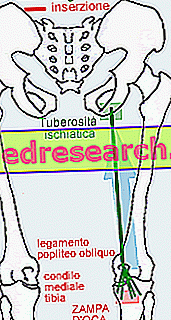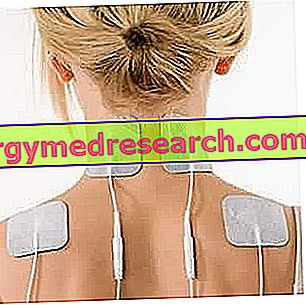By Dr. Antonio Parolisi
Training with isotonic machines, with free weights or even with just the weight of the body, can compromise the integrity of the joints. This occurs if a muscular district presents a retraction problem or the antagonist district does not have adequate elasticity and flexibility. More simply, if the stressed muscle does not have adequate elasticity, physical exercise can entail compensations that will affect the joints inserted in the muscle chain to which they belong.
When in the gym it is advised to train the hamstrings, such as the "prone leg curl" machine , in the vast majority of times the advice given is to lengthen the ischiocrural muscles before, during and after the sets for that exercise. This procedure is practiced, respectively, to prevent injuries, increase joint excursion, recover from training and dispose of the accumulation of metabolites that lead to pain the days after training.
With the term Ischiocrurali, Ischio-peroneo-tibiali or simply posterior Femorals, the group of muscles is identified that, from the ischial tuberosity and from the rough line of the femur, the biceps femoris on the head of the fibula and the semitendinosus and semimembranosus are inserted respectively on the back of the tibia. Ultimately these muscles (biarticular because they act on the hip and on the knee), have the function of flexing the knee on the thigh and extending the hip.
 |  |  |
The term just read identifies, broadly, what is the anatomical structure and the biomechanical functionality of the muscle group we are talking about. Rightly the exercise mentioned above was that of the leg curl. The basic problem is that when training those muscles, like leg flexors on the thigh, their antagonists, the hip flexor muscles (ileo-psoas, rectus of the femur) and the leg extensors ( quadriceps). Some might wonder what those front muscles are doing and how they act in the exercise of the prone leg curl. The answer is obtained by considering movement as a system of actions, shortening-lengthening; this means that if one muscle shortens, another will necessarily have to stretch. In the case of the ischiocruralis, when they will allow the flexion of the knee they will determine an elongation of the anterior musculature, in particular of the quadriceps muscles.
When the subject is completely stretched out on the bench he has already assumed a position of lengthening of the anterior chain by the action of a partial extension of the coxo-femoral joint. At this moment, if the hip flexor muscles are retracted or otherwise not adequately elastic, they will result in a compensatory lumbar hyperlordosis. In this situation the ileopsoas and rectus muscles of the femur passively pass the vertebrae from the 12th thoracic to the 4th lumbar vertebra and the pelvis in anteversion, putting the intervertebral joints under stress which in the long run can degenerate due to excessive overload stress; if we were in a condition of already declared disc suffering, such as in the presence of protrusions or herniated discs, it would really be a big problem!
This suggests, therefore, that the exercise in question was born with the aim of training and increasing the trophism of the ischiocrural muscles but that, if it has "subjective" contraindications, it should be used sparingly and modified if necessary.
How do we find out if leg curl is suitable or not for a person?
The answer is always the same! We need to test the subject ; to evaluate his articular excursion and to understand to what extent he can practice it or if perhaps he must return at a later time, after having adequately lengthened and made flexible all that which acts on the articulated deputies to that movement.
To assess muscle elasticity, of course, we resort to flexibility tests that should always be practiced before creating a training program that is considered personalized.
I repeat! To assess safety in curl, it is a priority to check the elasticity of the hip flexors and leg extenders!
The test that is best suited for convenience and practicality is the Thomas Test, where you see the subject lying on a cot or, if necessary, on a flat bench. It will be asked to bring the knees to the chest, alternately, then first one then the other, and the dysfunctions in flexibility of the examined muscles will be evaluated; in the specific case the quadriceps will be evaluated and in particular the Rectus of the femur and the ileo-psoas.
In Fig. 2 it can be seen how the subject in question has a good elasticity of the front chain and in particular of the hip flexors, since the thigh at the height of the popliteal fossa is not detached from the cot-bench; to also consider that the knee does not go into extension and this argues in favor of the fact that the quadriceps muscles have good elasticity.

Fig2 Thomas test
The subject has good flexibility
at the level of the hip and knee joint
In this case, when the person rests on a leg curl bench he will not be subjected to tension due to excessive compensation caused by the retracted muscles. Ultimately there are no contraindications to the practice there such exercise, which will only have to be customized based on the set goals; then we will proceed with the evaluation of the strength of the ischiocrural and with the creation of an adequate program to increase the trophism of the muscles in question.
It should be remembered, however, that a flexibility like the one shown in Figure 2 is not found in many subjects, especially in sedentary people who spend most of their time sitting or in any case not moving.
CONTINUE: Part Two »



